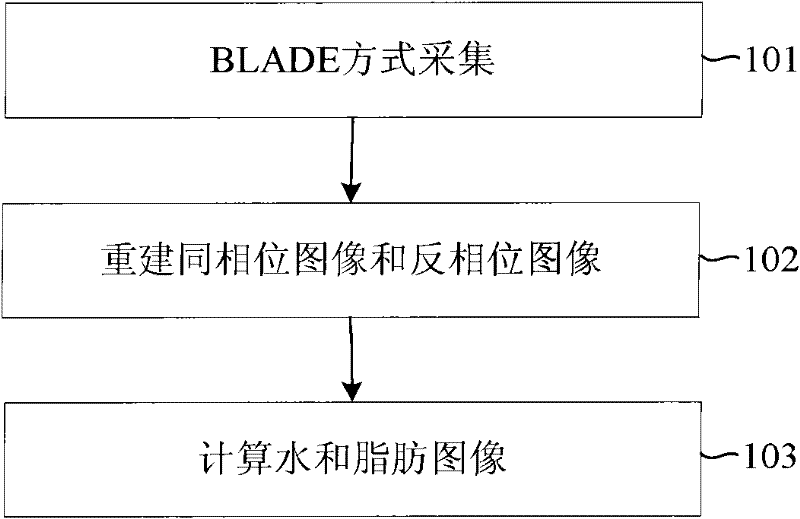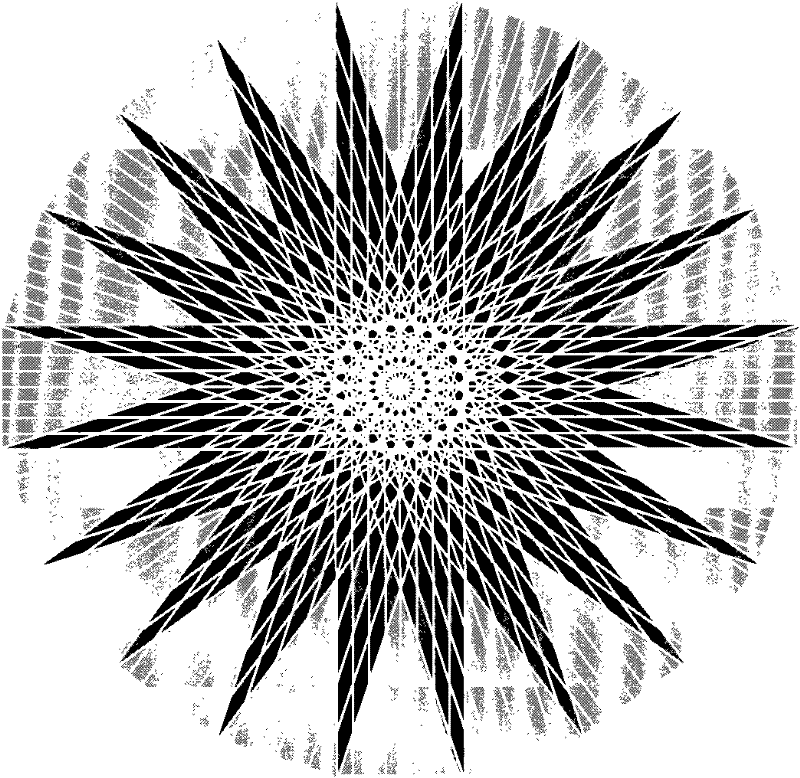Magnetic resonance imaging method for realizing water-fat separation
A technology of magnetic resonance imaging and water-fat separation, which is applied in magnetic resonance measurement, measurement using nuclear magnetic resonance imaging system, measurement of magnetic variables, etc. problem, to achieve the effect of improving the signal-to-noise ratio and reducing the sensitivity
- Summary
- Abstract
- Description
- Claims
- Application Information
AI Technical Summary
Problems solved by technology
Method used
Image
Examples
Embodiment Construction
[0029] In order to make the purpose, technical solution and advantages of the present invention clearer, the following examples are given to further describe the present invention in detail.
[0030] see figure 1 , according to one embodiment of the present invention, the magnetic resonance imaging method that the present invention is used for water fat separation comprises the following steps:
[0031] Step 101 , the magnetic resonance imaging equipment uses a blade artifact correction (BLADE) trajectory to collect the original data of one in-phase image and the original data of two anti-phase images.
[0032] The inventors of the present application skillfully applied the BLADE technique to the Dixon method. The BLADE technology, also known as propeller (PROPELLER, Periodically Rotated Overlapping ParallEL Lines with Enhanced Reconstruction) technology, can be found in James G. Pipe's paper "Motion Correction With PROPELLER MRI: Application to head motion and free-breathing...
PUM
 Login to View More
Login to View More Abstract
Description
Claims
Application Information
 Login to View More
Login to View More - R&D
- Intellectual Property
- Life Sciences
- Materials
- Tech Scout
- Unparalleled Data Quality
- Higher Quality Content
- 60% Fewer Hallucinations
Browse by: Latest US Patents, China's latest patents, Technical Efficacy Thesaurus, Application Domain, Technology Topic, Popular Technical Reports.
© 2025 PatSnap. All rights reserved.Legal|Privacy policy|Modern Slavery Act Transparency Statement|Sitemap|About US| Contact US: help@patsnap.com



